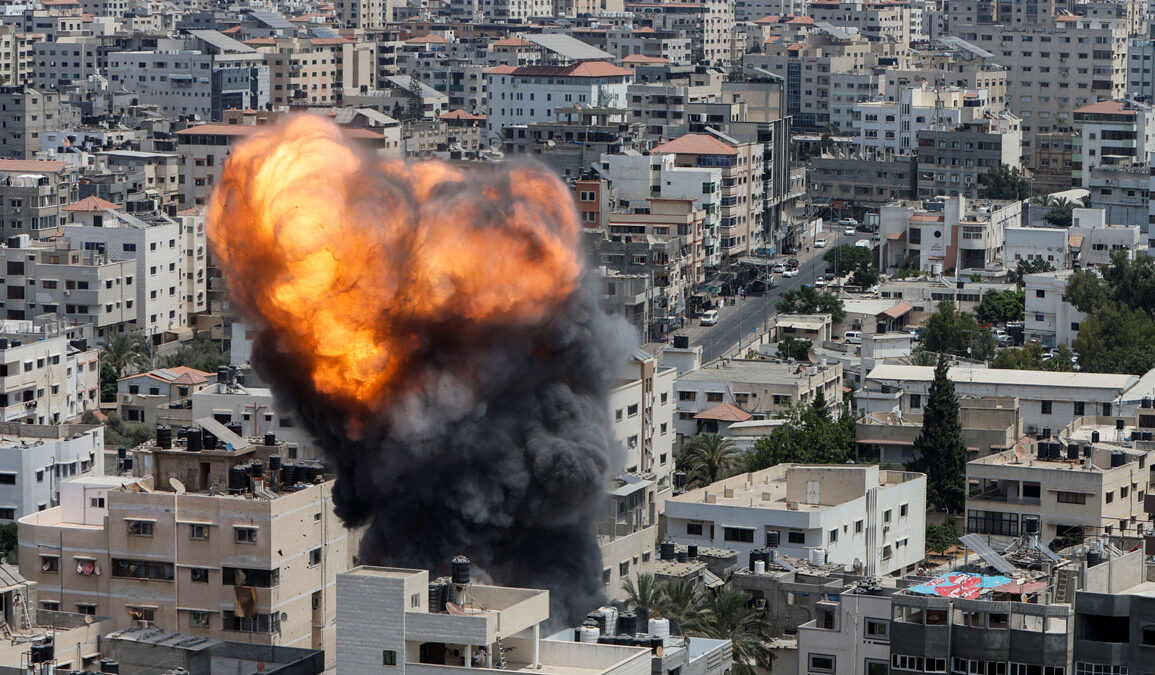After nearly two months of relative calm, Israel has resumed its military campaign against Hamas in the Gaza Strip, launching a wave of airstrikes that have killed at least 404 people, according to Palestinian health officials. The attack, which began early Tuesday, marks one of the deadliest days in the ongoing war, reigniting a conflict that has already displaced millions and left much of Gaza in ruins.
The ceasefire, which had been in place since January, initially provided a brief respite from months of intense warfare. It allowed for the release of some hostages taken by Hamas during the October 7 attack on Israel, in exchange for Palestinian prisoners held by Israel. However, negotiations on a second phase of the agreement—meant to secure the release of the remaining hostages—stalled.
Israeli Prime Minister Benjamin Netanyahu justified the renewed offensive by blaming Hamas for failing to release additional hostages or accept Israel’s conditions. “From now on, Israel will act against Hamas with increasing military force,” Netanyahu’s office declared in a statement, signaling an escalation in the conflict.
Mass Casualties and Widespread Destruction
The airstrikes targeted multiple locations across Gaza, including residential neighborhoods, Hamas command centers, and key infrastructure sites. In the southern city of Rafah, an Israeli missile struck a family home, killing 17 people, including five children. Witnesses described scenes of chaos as ambulances rushed victims to hospitals, where overburdened medical staff struggled to treat the wounded.
At Nasser Hospital in Khan Younis, doctors worked frantically to save patients as new casualties arrived every few minutes. “People are screaming, children are crying. There is blood everywhere,” one hospital worker told reporters.
Palestinian authorities said the airstrikes had killed at least 404 people and wounded more than 560, warning that the death toll was likely to rise as rescuers continued to search through the rubble. The destruction was particularly severe in areas that had been partially rebuilt during the ceasefire, leaving many families displaced once again.
Gaza’s Health Ministry, which is controlled by Hamas, reported that since the war began, more than 48,000 Palestinians have been killed, though the numbers do not distinguish between civilians and militants. According to the ministry, over half of those killed have been women and children.
Hostage Crisis Fuels the Conflict
One of the key reasons for the collapse of the ceasefire was the failure to reach an agreement on the remaining hostages still held in Gaza. When Hamas militants stormed into Israel on October 7, 2023, they killed around 1,200 people and took 251 hostages. Many were released during the first phase of the ceasefire, either in negotiated exchanges or through Israeli military operations. However, at least 59 hostages remain in captivity, and their fate has become a major point of contention.
A senior Hamas official, Izzat al-Risheq, blamed Netanyahu for dooming the hostages to an uncertain fate, calling the renewed strikes a “death sentence” for those still held by the group. “Netanyahu is sacrificing the hostages for his own political survival,” he added, urging mediators to “reveal the truth about who really broke the ceasefire.”
The Hostages and Missing Families Forum, an organization representing the families of those still held by Hamas, issued a harsh rebuke of Netanyahu’s government. “We are shocked, angry, and terrified by the deliberate dismantling of the process to return our loved ones from captivity,” the group said in a statement. They accused the government of prioritizing military action over negotiations, endangering the hostages’ lives rather than securing their release.
Why Did the Ceasefire Collapse?
The collapse of the ceasefire did not happen overnight. For weeks, negotiations on a second phase had struggled to move forward. While Hamas had demanded a complete Israeli military withdrawal from Gaza in exchange for releasing more hostages, Israel refused, insisting that the war would continue until Hamas was fully dismantled.
The Israeli government then proposed an alternative plan, which demanded that Hamas release half of the remaining hostages before negotiations could continue. When Hamas did not agree, Israel responded by cutting off all aid shipments, including food, fuel, and medical supplies, in an attempt to pressure the group into accepting the terms.
Palestinians in Gaza had feared that this deadlock would eventually lead to renewed violence. “Nobody wants to fight,” said Nidal Alzaanin, a resident of Gaza City. “Everyone is still suffering from the previous months.”
The U.S. Stands with Israel
The United States has voiced strong support for Israel’s decision to restart its military campaign, placing the blame squarely on Hamas. White House National Security Council spokesman Brian Hughes said, “Hamas could have released hostages to extend the ceasefire but instead chose refusal and war.”
The Trump administration confirmed that Israel had given prior notice before launching the strikes. White House Press Secretary Karoline Leavitt took a hardline stance, warning Hamas and other militant groups that “all hell will break loose” if they did not surrender hostages.
However, the United Nations and several humanitarian organizations have condemned the renewed violence. U.N. Secretary-General António Guterres said he was “shocked by the Israeli airstrikes in Gaza, in which a meaningful number of civilians have been killed.” The Norwegian Refugee Council (NRC) issued a statement warning that “Israel’s attacks threaten to plunge Gaza into yet another cycle of mass death, destruction, and displacement.”
Egypt, one of the key mediators of the ceasefire, also denounced Israel’s actions. “This is a flagrant violation of the ceasefire agreement and a dangerous escalation that threatens regional stability,” Egypt’s foreign ministry said in a statement.
What Comes Next?
As Israel intensifies its strikes and issues evacuation orders for parts of northern Gaza, many fear that a new ground invasion could be imminent. Netanyahu, who has faced mounting domestic criticism over his handling of the war, may see the renewed offensive as a way to regain political strength.
In a sign of shifting political dynamics, Israel’s ultranationalist “Jewish Power” party, led by Itamar Ben-Gvir, announced it was rejoining the government after previously leaving in protest of the ceasefire agreement. The party’s return suggests that Netanyahu may now have stronger backing for a prolonged military campaign.
For Gaza’s civilians, the situation is growing more desperate by the day. The territory’s already fragile infrastructure has been further weakened, and Israel has closed the Rafah border crossing, cutting off a crucial lifeline for humanitarian aid.
With millions displaced, tens of thousands dead, and a peace agreement now in tatters, the war in Gaza shows no signs of ending anytime soon. As both sides remain entrenched in their positions, the cycle of violence threatens to drag on indefinitely, leaving civilians to bear the brunt of the devastation.








